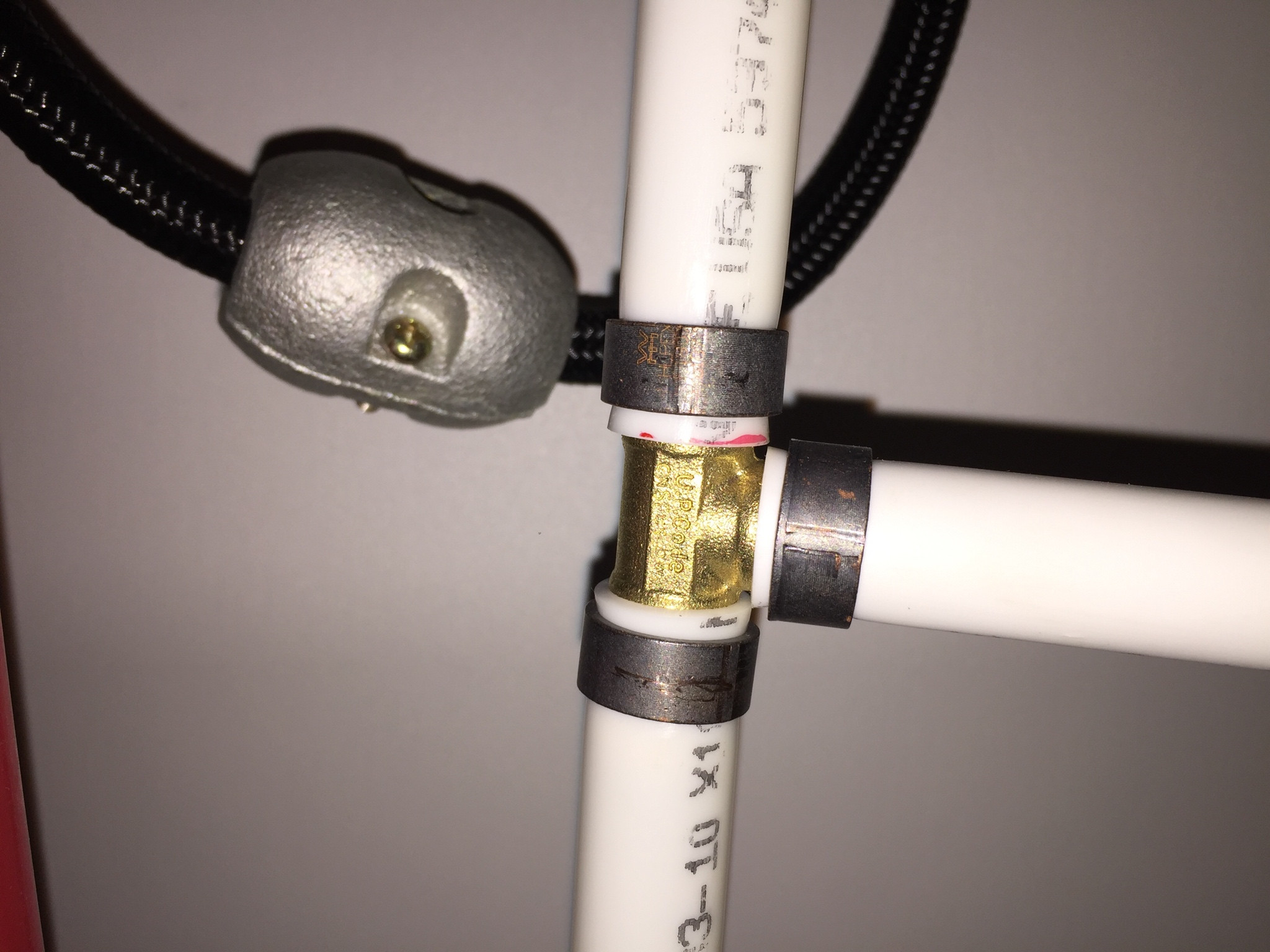I feel that rings fit generally pretty snugly on the pipes, if you managed to crimp it and it satisfies the following conditions, then it should be good:
Sharkbite crimp ring instructions state that assuming the pex pipe is well seated around the pex fitting, the distance between the edge of the crimp ring and the edge of the pex pipe should lie between 1/8" and 1/4".
(the end goal there being that the ring should cover the area spanned by the two middle barbs on the pex brass fitting). As the comments mention, it's also better if it's done squarely to the pipe, but there is room for "angular" error.
Passes the go/no-go gauge to make sure it's crimped enough. This will ensure that the crimp ring applies enough compression to the pipe. The ring will cause the pipe to deform around these barbs on the fitting.
Doesn't leak.
PEX is generally forgiving, and if there's no leak now, there may not be ever a leak. I'm not a plumber though, I only have a few pex projects I've done. I say this also because just from looking at your pictures, I can't even tell which one is supposed to be the one that's askew -- so it doesn't look that bad.
If you're still uncomfortable, I can suggest a few more options:
You can replace a section of pex between two fittings by cutting the ring and reusing the brass fitting, and you wouldn't have to redo any other connections. Search for "Crimp ring removal tool". The overall length of the pipe wouldn't change, but you may need to insert another straight coupling if this connection is far away from the next one.
This looks like it's under a sink. It's a good idea to have a water leak detector. It works a bit like a fire alarm. There's a long-lasting battery, and when water splashes on it, it yells. Sometimes you get a home insurance discount when you add those to your house.
Adding one more element on the way to the 1 or 2 fixtures shouldn't cause a noticeable difference in pressure, if that was a concern. The openings in the valves for the tap or the valves on a dishwasher are typically smaller than the size of the smallest diameter fitting along the 1/2" pex tubing.
This video is interesting: https://youtu.be/92x9z6uQbV4
You'll see a bunch of passing / non-passing crimp examples.
In the future
Rings have a tendency to crimp out of square with the pipe if they're oval, because it creates play along one axis. I experience this the most when I add rings to a pipe that is vertical (plumb), because I'll have to finger-pinch them a bit so they stay in place until I get the crimping tool over them (it's a two hander tool).
I'd recommend to pinch them as little as possible, or to toss out the rings that aren't initially (perfectly) circular, if you have plenty of spares to go around. After doing it for a while, it becomes second nature, and you can compensate a bit more for uneven rings.



